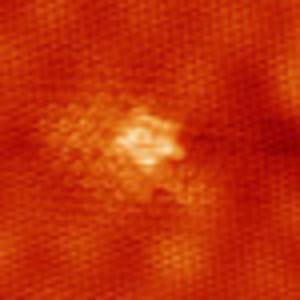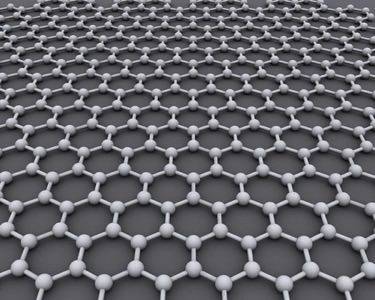When Andre Geim and Konstantin Novoselov of the University of Manchester developed graphene, it won them this year’s Nobel Prize in physics. There were reasons for that. The one atom-thick substance, shaved from crystals, is possibly among the lightest-weight, most conducive and rugged materials on earth.

The avenues of development for the material include help in sequencing DNA and the possible creation of an extraordinary energy storage medium. But how can you make a computer out of the stuff? Just add water.
The What
Scientists have already used graphene to create a new type of memory, greater than standard “by a factor of five.”
But what about transistors, the brains of the machine? Some work had been done by the original developers on creating transistors from the material. But the process, carving channels through the material, is not conducive to practical application.
Now, a group at Rensselaer Polytechnic have made a major advance, one that puts graphene-based computing in reach, if not imminent.

Professor Nikhil Koratkar and his crew have published their finding in the sexiest titled paper since, “The Flu’s Proton Escort”: “Tunable Bandgap in Graphene by the Controlled Adsorption of Water Molecules.” (Ah-wicka-wow-wow.)
The What Now?
For those of you without advanced physics degrees, what that means is that you can use water in conjunction with graphene to create an on-off switch, a transistor..
How does a graphene/water transistor work? Take a wafer of graphene and slap it onto one of silicon and silicon dioxide, then send water into the tiny space between the two; the water backs away from the silicon toward the graphene, de-conducting the water, and breaking the connection.
The So What
New Transistors Are Key to the Future of Big Data
Read all about it in ReadWriteWeb’s latest free research report, The Age of Exabytes: Tools & Approaches for Managing Big Data
Why is this important? Water is a safe, common element, so when and if the technology takes off, it would need, and create, less toxicity than current transistor technology. And that’s nice. What’s more compelling to the computing experience is that, in combination with radically extended storage possibilities, the graphene transistor has the potential to make computers tougher, much smaller and much faster than we have now. A device the size of tablet might carry the processing power and memory of a network of computers.
First graphene image via Argonne National Laboratory | second graphene photo from Wikipedia









